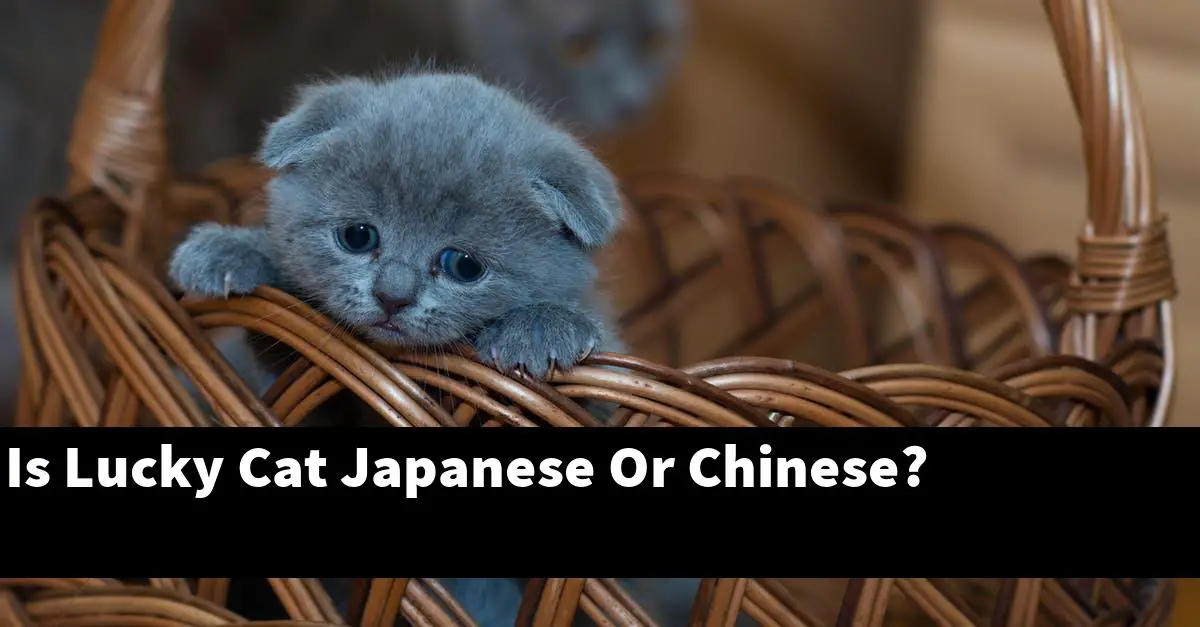The lucky cat, also known as the beckoning cat, is a popular figure in Chinese and Japanese folklore. The lucky cat is often depicted as a calico cat with a raised paw, and is believed to bring good luck to its owner.
While the origins of the lucky cat are unclear, it is thought to be a Chinese import that was popularized in Japan during the Edo period. Today, the lucky cat can be found in homes and businesses across Asia, and is a popular tourist souvenir.
Is the lucky cat Japanese?
The origins of the lucky cat remain largely unknown. Some believe that the lucky cat is a Japanese cultural icon that originated in the Edo Period (1603-1868), while others believe that the lucky cat may in fact have originated in China.
Regardless of its origins, the lucky cat is widely recognized and popular in Japan.
The lucky cat is often used as a symbol of good luck and is often featured on Japanese ceramic and porcelain items. The lucky cat also has a long history of being used in traditional Japanese medicine as a treatment for various ailments.
Overall, the lucky cat is a popular icon in Japan and is often seen as a symbol of good luck.
Where does the lucky cat come from?
The lucky cat is a Chinese folktale that tells the story of a cat who is cursed by a goddess. The goddess tells the cat that if it can find a pot of gold, she will remove the curse.
The cat travels across China and eventually finds the pot of gold. After saving a baby from a burning building, the cat is finally able to return the pot of gold to the goddess and is no longer cursed.
Why is cat lucky in Japan?
There are many theories as to why cats are considered to be lucky in Japan. One belief is that cats are associated with the gods of the moon, and as such, they are thought to bring good luck.
Another popular theory is that cats have a close connection to the goddess of the moon, and as such, they are thought to be lucky creatures. Additionally, cats are often considered to be good luck charms in Japan, and as such, they are often given as gifts to people who are in need of good luck.
What does the Japanese lucky cat say?
The Japanese lucky cat says “meow.”
Is Maneki Neko Japanese or Chinese?
There is no single answer to this question as it is a matter of opinion. Some people believe that Maneki Neko is Japanese, while others believe that Maneki Neko is Chinese in origin.
There is no definitive answer, and the answer is likely to depend on the individual’s interpretation of the character and the culture from which it originated.
Are cats lucky in Chinese culture?
It varies depending on the culture in question. Some people in China believe that cats are lucky because they are often associated with the goddess of the moon, which is seen as a symbol of fertility and life.
Additionally, many people in China believe that cats are able to see in the dark and are therefore associated with the supernatural.
Who invented the lucky cat?
The lucky cat is a popular icon of Chinese culture, and is generally believed to have originated in the Qing Dynasty. It is often depicted as a white, black, or gray cat with a large, lucky eye, and is often held up by superstitious people as a symbol of good luck.
Where do Japanese lucky cats go?
It depends on the individual’s beliefs and cultural background. Some people believe that lucky cats go to heaven, while others believe that they go to the home of a family member or friend who has been good to them in the past.
What does the cat represent in Japanese culture?
A cat in Japanese culture is often considered to be a lucky animal. There are many stories and legends about how cats have helped people in need, and they are often seen as protectors of homes and families.
How do you spell lucky cat in Japanese?
There are three possible spellings of the word “lucky cat” in Japanese:
ryūjin-sama, kuroneko-sama, and koumiko-sama.
The first, ryūjin-sama, is the most commonly used and is usually translated as “lucky cat.”
The second, kuroneko-sama, is used to refer to the white-faced Japanese sparrow (Kuroneko), and is usually translated as “cat of the haunted house.”
The third, koumiko-sama, is used to refer to the black cat, and is usually translated as “cat of the moon.”
Conclusion
There is some debate over the origins of the lucky cat, but it is generally agreed that the lucky cat is a Japanese tradition. The lucky cat is a popular figure in Japanese culture and is often seen in businesses as a good luck charm.
The lucky cat is usually depicted as a white cat with its paw raised, which is said to bring good luck.


